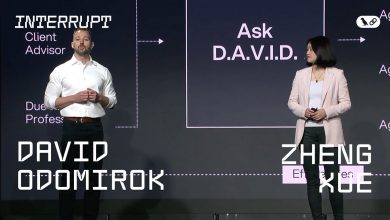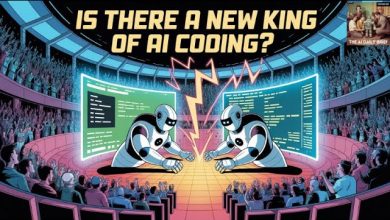What Is Agentic AI, and How Will It Change Work
The term "agentic" derives from the concept of agency, implying that these systems can act independently to achieve predefined objectives.
 The Harvard Business Review article titled “What Is Agentic AI, and How Will It Change Work?” provides an in-depth exploration of agentic AI, a transformative evolution of artificial intelligence that promises to reshape the future of work.
The Harvard Business Review article titled “What Is Agentic AI, and How Will It Change Work?” provides an in-depth exploration of agentic AI, a transformative evolution of artificial intelligence that promises to reshape the future of work.
Unlike traditional AI systems, which are primarily reactive and require specific prompts to deliver outputs, agentic AI is characterized by its autonomy, reasoning capabilities, and ability to proactively execute complex tasks with minimal human intervention.
Defining Agentic AI
Agentic AI refers to artificial intelligence systems that exhibit a high degree of autonomy, initiative, and goal-oriented behavior. The term “agentic” derives from the concept of agency, implying that these systems can act independently to achieve predefined objectives.
Unlike earlier AI models, such as predictive algorithms or generative AI tools like large language models (LLMs), agentic AI is designed to reason through problems, make decisions, and adapt to changing circumstances without requiring step-by-step instructions. The article emphasizes that agentic AI combines advanced reasoning, planning, and execution capabilities, enabling it to function as a virtual collaborator rather than a mere tool.
The authors illustrate this distinction with examples. Traditional AI might respond to a query like “Write a report” by generating text based on patterns in its training data.
In contrast, an agentic AI could be tasked with “Prepare a comprehensive market analysis report by next week,” and it would independently gather data, analyze trends, draft the report, and even revise it based on feedback—all without human hand-holding. This shift from reactive to proactive behavior marks a significant leap in AI’s potential to transform work.
Technical Foundations
The article explains that agentic AI builds on recent advancements in AI research, particularly in LLMs and reinforcement learning. LLMs provide the natural language understanding and generation capabilities that allow agentic AI to communicate effectively with humans and interpret complex instructions.
Reinforcement learning, on the other hand, equips these systems with decision-making skills, enabling them to optimize actions toward achieving specific goals. Additionally, agentic AI often incorporates memory and context-awareness, allowing it to learn from past interactions and maintain continuity in long-term tasks.
Another critical component is the ability to interact with external systems. Agentic AI can integrate with APIs, databases, and other software tools to perform actions like booking flights, querying financial records, or controlling IoT devices. This interoperability makes it versatile across industries, from healthcare to logistics to customer service. The authors note that while these capabilities are still in their infancy, rapid advancements in AI research are accelerating the development of fully autonomous agents.
Applications Across Industries
The article provides several compelling examples of how agentic AI could be applied in real-world scenarios, highlighting its versatility and potential to augment human work. In healthcare, agentic AI could act as a virtual caregiver, monitoring patients’ vital signs, scheduling appointments, and coordinating with doctors to ensure timely interventions.
In travel planning, an AI agent could handle every aspect of a trip—researching destinations, booking flights and hotels, and even adjusting plans in real time if a flight is delayed. In business, agentic AI could optimize supply chains by predicting demand, managing inventory, and negotiating with suppliers autonomously.
One particularly striking example is in creative industries. An agentic AI could collaborate with a marketing team to design a campaign, generating ideas, drafting content, analyzing audience data, and adjusting strategies based on real-time performance metrics. These examples underscore the technology’s ability to handle multifaceted tasks that require both analytical and creative thinking, traditionally considered human domains.
Impact on the Workplace
The authors argue that agentic AI will profoundly change how work is organized and performed. By automating complex, time-consuming tasks, it has the potential to boost productivity and free up human workers to focus on higher-value activities, such as strategic decision-making and relationship-building. For instance, in customer service, agentic AI could handle routine inquiries and escalations, allowing human agents to concentrate on emotionally nuanced or high-stakes interactions.
Moreover, agentic AI could democratize access to expertise. Small businesses, which often lack resources for specialized staff, could use AI agents to perform tasks like financial forecasting or legal research, leveling the playing field with larger competitors. The article also envisions a future where agentic AI fosters innovation by generating novel insights from data, such as identifying untapped market opportunities or optimizing energy consumption in manufacturing.
However, the transformation won’t be seamless. The authors acknowledge that agentic AI could disrupt job roles, particularly those involving repetitive or process-driven tasks. While it’s unlikely to replace humans entirely, it may require workers to upskill and adapt to collaborating with intelligent agents. Organizations will need to invest in training programs to ensure employees can leverage AI effectively, fostering a culture of human-AI partnership rather than competition.
Risks and Challenges
Despite its promise, agentic AI introduces significant risks that must be addressed to ensure responsible deployment. The article highlights several concerns, starting with bias and errors. Since agentic AI relies on training data, it could perpetuate existing biases or make flawed decisions if the data is incomplete or skewed. For example, an AI agent tasked with hiring could inadvertently favor certain demographics if trained on biased resumes.
Another risk is overreliance. If humans defer too much to AI agents, they may lose critical thinking skills or fail to catch errors in the AI’s reasoning. The article cites the concept of “automation bias,” where users trust AI outputs without scrutiny, potentially leading to costly mistakes. Security is also a major concern, as autonomous agents with access to sensitive systems could be exploited by malicious actors if not properly safeguarded.
Perhaps most critically, the article warns of ethical dilemmas. Agentic AI’s ability to act independently raises questions about accountability. If an AI agent causes harm—say, by mismanaging a patient’s care or crashing a financial system—who is responsible? The developers, the organization using the AI, or the AI itself? These questions underscore the need for robust governance frameworks to guide the development and use of agentic AI.
The Need for Governance
To mitigate these risks, the authors call for proactive governance by both business leaders and policymakers.
They advocate for the establishment of ethical guidelines, transparency standards, and accountability mechanisms to ensure agentic AI is developed responsibly. For businesses, this means embedding AI ethics into corporate strategies, conducting regular audits of AI systems, and fostering interdisciplinary teams that include technologists, ethicists, and domain experts.
On the policy front, the article suggests that governments should collaborate globally to set standards for agentic AI, similar to regulations for aviation or pharmaceuticals. This could include mandating “explainability” features, where AI agents must justify their decisions in human-understandable terms, or requiring fail-safes to prevent unintended consequences. The authors stress that governance must begin now, while agentic AI is still emerging, to avoid reactive measures after problems arise.
A Vision for the Future
In closing, the article paints an optimistic yet cautious vision of a world transformed by agentic AI. It envisions a future where humans and AI agents collaborate seamlessly, combining human creativity and empathy with AI’s efficiency and analytical power. This partnership could unlock unprecedented levels of productivity, innovation, and societal progress, from solving climate challenges to improving global healthcare access.
However, realizing this vision requires careful stewardship. The authors urge leaders to embrace agentic AI’s potential while addressing its risks head-on, ensuring it serves as a force for good rather than disruption. By fostering trust, transparency, and collaboration, society can harness agentic AI to redefine work in ways that empower rather than replace humans.
Conclusion
The Harvard Business Review article offers a comprehensive look at agentic AI, positioning it as a game-changer for the workplace. Through its ability to reason, plan, and act autonomously, agentic AI promises to enhance productivity, democratize expertise, and drive innovation. Yet, it also poses challenges that demand proactive governance and ethical foresight. As organizations and policymakers navigate this new frontier, the article underscores the importance of balancing ambition with responsibility to shape a future where agentic AI amplifies human potential.



